Latest AZ-104 Actual Free Exam Updated 257 Questions
Online Questions - Valid Practice AZ-104 Exam Dumps Test Questions
Module 2: Storage Implementation and Management
The second domain throws light on the Azure implementation and storage, including the administration of storage accounts, setting up blob storage alongside Azure files, and handling data management tasks for Azure Storage. The details include the replication implementation, Azure account generation, import as well as export from Azure jobs, utilizing AZCopy, the configuration of blob object replication and lifecycle management, etc.
Microsoft AZ-104 exam is one of the most popular Azure certification exams, and passing the exam demonstrates an individual's ability to manage and monitor Azure resources effectively. AZ-104 exam is also a requirement for IT professionals who want to pursue more advanced Azure certifications such as the Azure Solutions Architect Expert or the Azure DevOps Engineer Expert. AZ-104 exam is designed to test the candidate's knowledge of various Azure services and their ability to configure, manage, and monitor those services.
NEW QUESTION # 86
You create an Azure VM named VM1 that runs Windows Server 2019.
VM1 is configured as shown in the exhibit. (Click the Exhibit button.)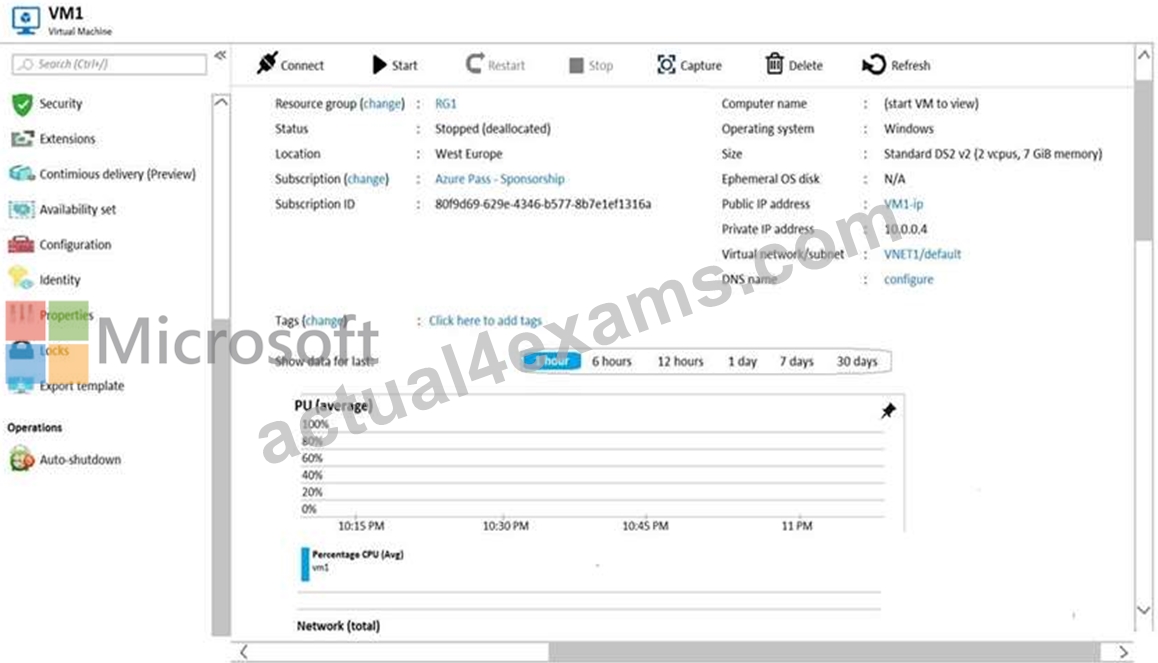
You need to enable Desired State Configuration for VM1.
What should you do first?
- A. Start VM1.
- B. Configure a DNS name for VM1.
- C. Connect to VM1.
- D. Capture a snapshot of VM1.
Answer: A
Explanation:
Explanation
Status is Stopped (Deallocated).
The DSC extension for Windows requires that the target virtual machine is able to communicate with Azure.
The VM needs to be started.
References:
https://docs.microsoft.com/en-us/azure/virtual-machines/extensions/dsc-windows
NEW QUESTION # 87
You have an Azure subscription that contains the following storage account:
You need 10 create a request to Microsoft Support to perform a live migration of storage1 to Zone Redundant Storage (ZRS) replication. How should you modify storage1 before the Live migration?
- A. Set the replication to Locally-redundant storage (IRS)
- B. Remove the lock
- C. Disable Advanced threat protection
- D. Set the access tier to Hot
Answer: A
NEW QUESTION # 88
You have an Azure Active Directory (Azure AD) tenant that has the initial domain name.
You have a domain name of contoso.com registered at a third-party registrar.
You need to ensure that you can create Azure AD users that have names containing a suffix of @contoso.com.
Which three actions should you perform in sequence? To answer, move the appropriate cmdlets from the list of cmdlets to the answer area and arrange them in the correct order.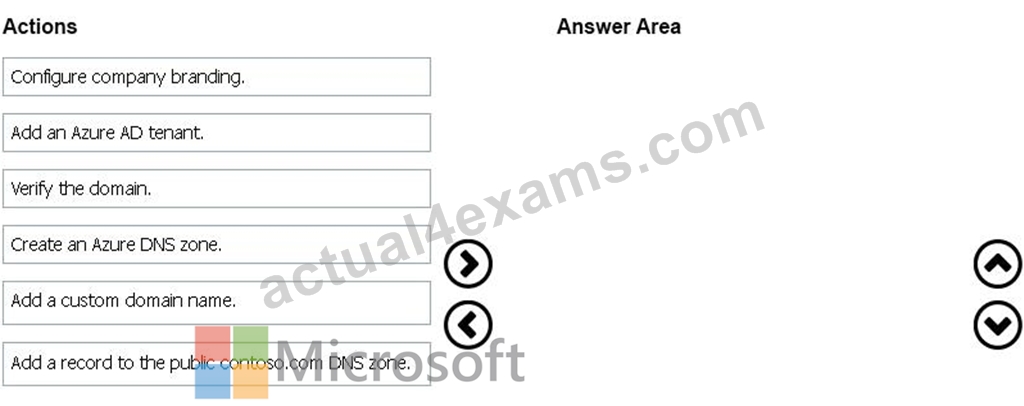
Answer:
Explanation: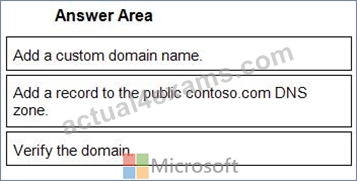
1 - Add a custom domain name.
2 - Add a record to the public contoso.com DNS zone.
3 - Verify the domain.
NEW QUESTION # 89
HOTSPOT
You have an Azure subscription that contains an Azure Availability Set named WEBPROD-AS-USE2 as shown in the following exhibit.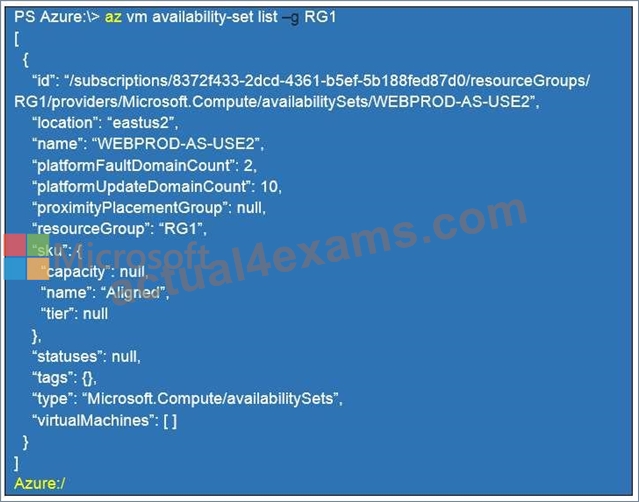
You add 14 virtual machines to WEBPROD-AS-USE2.
Use the drop-down menus to select the answer choice that completes each statement based on the information presented in the graphic.
NOTE: Each correct selection is worth one point.
Hot Area: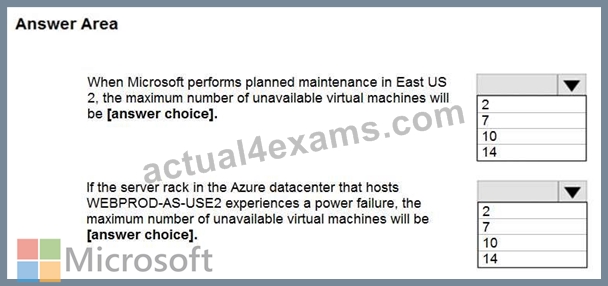
Answer:
Explanation: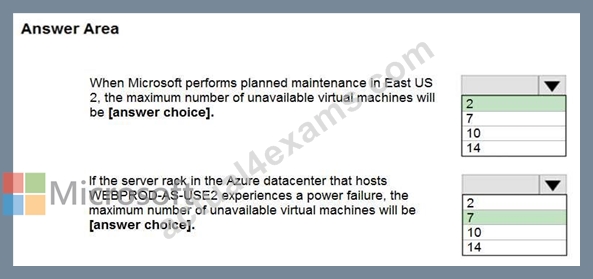
Section: [none]
Explanation:
Box 1: 2
There are 10 update domains. The 14 VMs are shared across the 10 update domains so four update domains will have two VMs and six update domains will have one VM. Only one update domain is rebooted at a time.
Therefore, a maximum of two VMs will be offline.
Box 2: 7
There are 2 fault domains. The 14 VMs are shared across the 2 fault domains, so 7 VMs in each fault domain.
A rack failure will affect one fault domain so 7 VMs will be offline.
Reference:
https://docs.microsoft.com/en-us/azure/virtual-machines/windows/manage-availability
NEW QUESTION # 90
You have an app named App1 that runs on an Azure web app named webapp1.
The developers at your company upload an update of App1 to a Git repository named GUI.
Webapp1 has the deployment slots shown in the following table.
You need to ensure that the App1 update is tested before the update is made available to users.
Which two actions should you perform? Each correct answer presents part of the solution.
NOTE: Each correct selection is worth one point.
- A. Stop webapp1-prod
- B. Deploy the App1 update to webapp1-test, and then test the update
- C. Swap the slots
- D. Stop webapp1-test
- E. Deploy the App1 update to webapp1-prod, and then test the update
Answer: B,C
Explanation:
https://docs.microsoft.com/en-us/azure/app-service/deploy-staging-slots
NEW QUESTION # 91
You need to recommend an identify solution that meets the technical requirements.
What should you recommend?
- A. password hash synchronization and single sign-on (SSO)
- B. cloud-only user accounts
- C. Pass-through Authentication and single sign-on (SSO)
- D. federated single-on (SSO) and Active Directory Federation Services (AD FS)
Answer: D
Explanation:
Active Directory Federation Services is a feature and web service in the Windows Server Operating System that allows sharing of identity information outside a company's network.
Scenario: Technical Requirements include:
Prevent user passwords or hashes of passwords from being stored in Azure.
Topic 4, Contoso Ltd (Consulting Company)
To start the case study
To display the first question in this case study, click the Next button. Use the buttons in the left pane to explore the content of the case study before you answer the questions. Clicking these buttons displays information such as business requirements, existing environment, and problem statements. If the case study has an All Information tab, note that the information displayed is identical to the information displayed on the subsequent tabs. When you are ready to answer a question, click the Question button to return to the question.
Overview
General Overview
Contoso, Ltd. is a consulting company that has a main office in Montreal and branch offices in Seattle and New York.
Environment
Existing Environment
Contoso has an Azure subscription named Sub1 that is linked to an Azure Active Directory (Azure AD) tenant. The network contains an on-premises Active Directory domain that syncs to the Azure AD tenant.
The Azure AD tenant contains the users shown in the following table.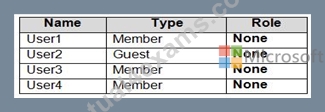
Sub1 contains two resource groups named RG1 and RG2 and the virtual networks shown in the following table.
User1 manages the resources in RG1. User4 manages the resources in RG2.
Sub1 contains virtual machines that run Windows Server 2019 as shown in the following table
No network security groups (NSGs) are associated to the network interfaces or the subnets.
Sub1 contains the storage accounts shown in the following table.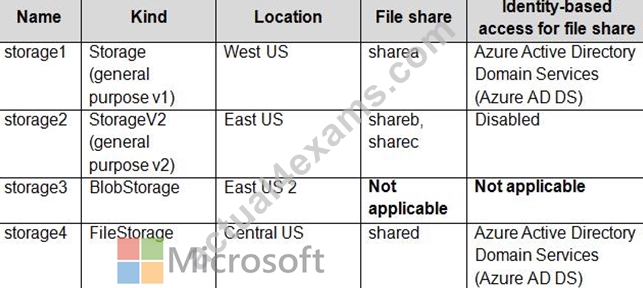
Requirements
Planned Changes
Contoso plans to implement the following changes:
Create a blob container named container1 and a file share named share1 that will use the Cool storage tier.
Create a storage account named storage5 and configure storage replication for the Blob service.
Create an NSG named NSG1 that will have the custom inbound security rules shown in the following table.
Associate NSG1 to the network interface of VM1.
Create an NSG named NSG2 that will have the custom outbound security rules shown in the following table.
Associate NSG2 to VNET1/Subnet2.
Technical Requirements
Contoso must meet the following technical requirements:
Create container1 and share1.
Use the principle of least privilege.
Create an Azure AD security group named Group4.
Back up the Azure file shares and virtual machines by using Azure Backup.
Trigger an alert if VM1 or VM2 has less than 20 GB of free space on volume C.
Enable User1 to create Azure policy definitions and User2 to assign Azure policies to RG1.
Create an internal Basic Azure Load Balancer named LB1 and connect the load balancer to VNET1/Subnet1 Enable flow logging for IP traffic from VM5 and retain the flow logs for a period of eight months.
Whenever possible, grant Group4 Azure role-based access control (Azure RBAC) read-only permissions to the Azure file shares.
NEW QUESTION # 92
You have an Azure Active Directory (Azure AD) tenant named contoso.com.
You have a CSV file that contains the names and email addresses of 500 external users.
You need to create a guest user account in contoso.com for each of the 500 external users.
Solution: You create a Power Shell script that runs the New-AZureADUser cmdlet for each user.
Does this meet the goal?
- A. NO
- B. Yes
Answer: A
NEW QUESTION # 93
You have an Azure Storage account named storage1.
You have an Azure App Service app named app1 and an app named App2 that runs in an Azure container instance. Each app uses a managed identity.
You need to ensure that App1 and App2 can read blobs from storage1 for the next 30 days.
What should you configure in storage1 for each app?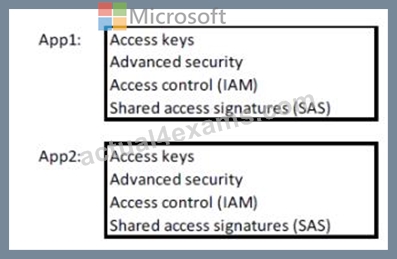
Answer:
Explanation: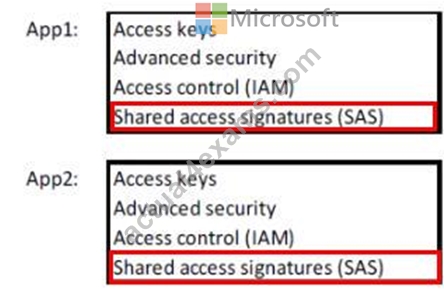
Reference:
https://docs.microsoft.com/en-us/azure/storage/common/storage-sas-overview
NEW QUESTION # 94
You have an Azure Storage account named storage1.
You have an Azure App Service app named app1 and an app named App2 that runs in an Azure container instance. Each app uses a managed identity.
You need to ensure that App1 and App2 can read blobs from storage1 for the next 30 days.
What should you configure in storage1 for each app?
With Shared access signature you can limit the resources for access and at the same time can control the duration of the access.
A shared access signature (SAS) provides secure delegated access to resources in your storage account without compromising the security of your data.
With a SAS, you have granular control over how a client can access your data. You can control what resources the client may access, what permissions they have on those resources, and how long the SAS is valid, among other parameters.
Answer:
Explanation: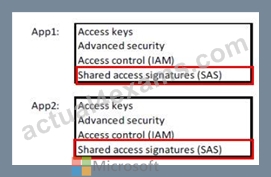
Reference:
https://docs.microsoft.com/en-us/azure/storage/common/storage-sas-overview
NEW QUESTION # 95
You have an Azure subscription that contains two om-premises locations named site1 and site2.
You need to connect site1 and site2 by using an Azure Virtual WAN.
Which four actions should you perform in sequence? To answer, move the appropriate actions from the list of actions to the answer area and arrange them in the correct order.
Answer:
Explanation:
Graphical user interface, text, application Description automatically generated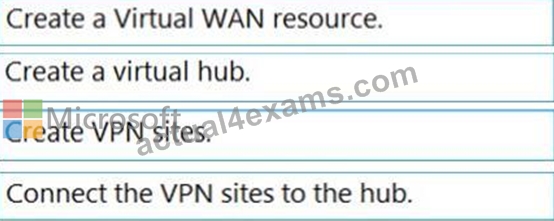
NEW QUESTION # 96
You have an Azure subscription named Subscription1 that contains the resources shown in the following table.
You plan to configure Azure Backup reports for Vault1.
You are configuring the Diagnostics settings for the AzureBackupReports log.
Which storage accounts and which Log Analytics workspaces can you use for the Azure Backup reports of Vault1? To answer, select the appropriate options in the answer area.
NOTE: Each correct selection is worth one point.
Answer:
Explanation: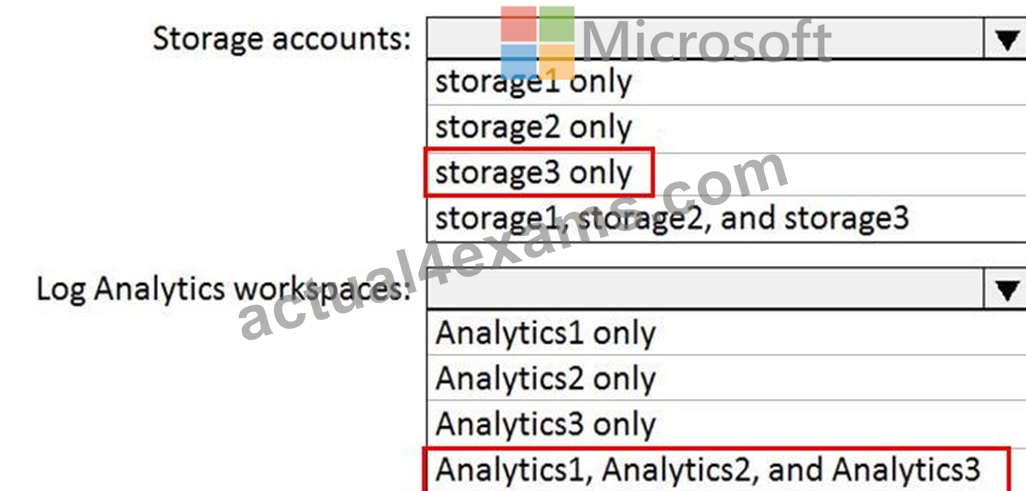
NEW QUESTION # 97
You have an Azure Active Directory (Azure AD) tenant that has the initial domain name.
You have a domain name of contoso.com registered at a third-party registrar.
You need to ensure that you can create Azure AD users that have names containing a suffix of @contoso.com.
Which three actions should you perform in sequence? To answer, move the appropriate cmdlets from the list of cmdlets to the answer area and arrange them in the correct order.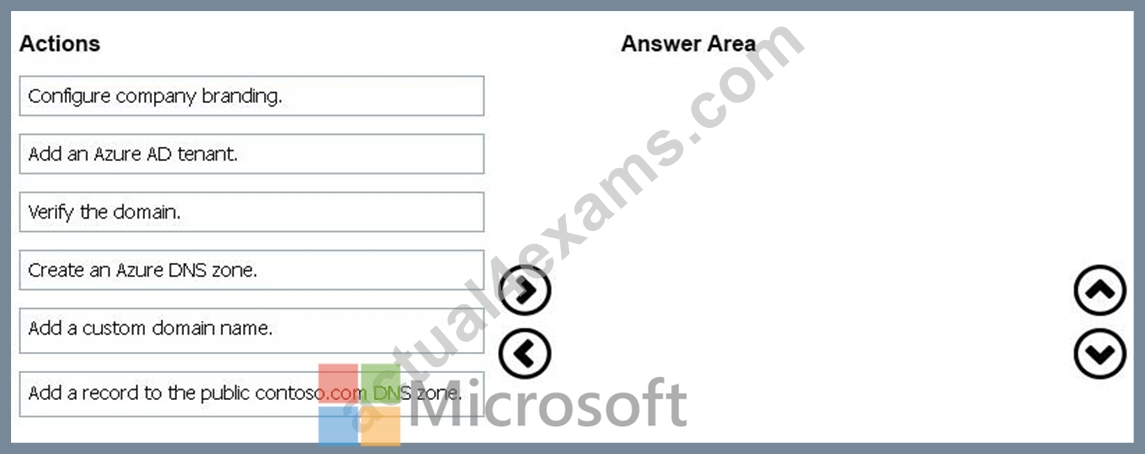
Answer:
Explanation: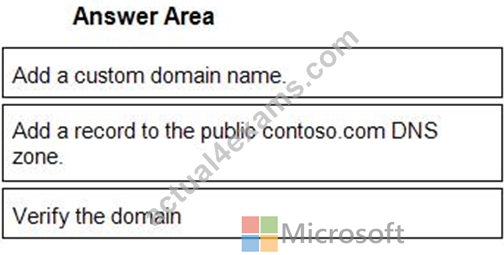
1 - Add a custom domain name.
2 - Add a record to the public contoso.com DNS zone.
3 - Verify the domain
NEW QUESTION # 98
You plan to use Azure Network Watcher to perform the following tasks:
* Task1: Identify a security rule that prevents a network packet from reaching an Azure virtual machine
* Task2: Validate outbound connectivity from an Azure virtual machine to an external host Which feature should you use for each task? To answer, select the appropriate options in the answer area.
NOTE: Each correct selection is worth one point.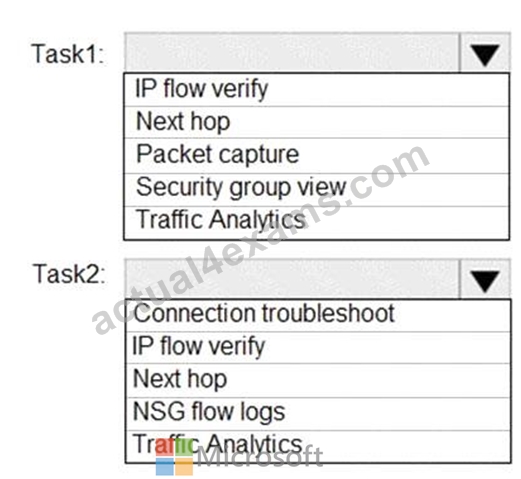
Answer:
Explanation: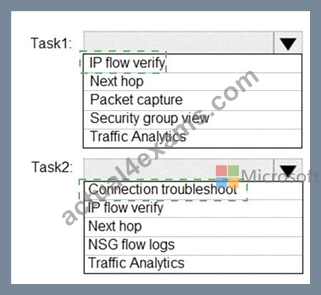
Explanation
1: IP Flow verify
2: Connection troubleshoot
https://docs.microsoft.com/en-us/azure/network-watcher/network-watcher-monitoring-overview
NEW QUESTION # 99
You have a sync group named Sync1 that has a cloud endpoint. The cloud endpoint includes a file named File1.txt.
You on-premises network contains servers that run Windows Server 2016. The servers are configured as shown in the following table.
You add Share1 as an endpoint for Sync1. One hour later, you add Share2 as an endpoint for Sync1.
For each of the following statements, select Yes if the statement is true. Otherwise, select No.
NOTE: Each correct selection is worth one point.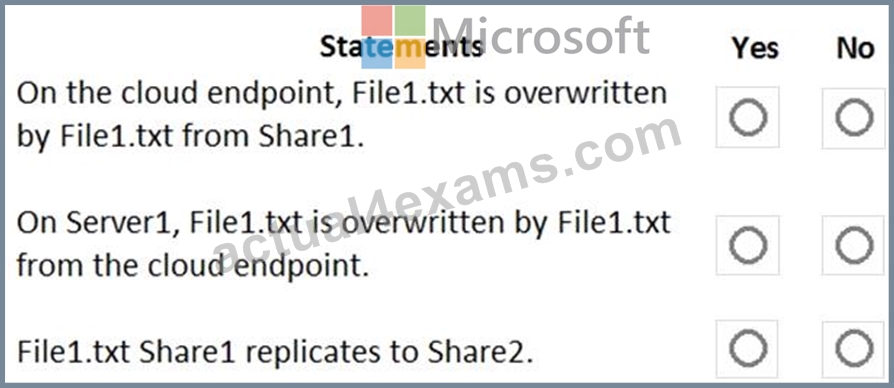
Answer:
Explanation: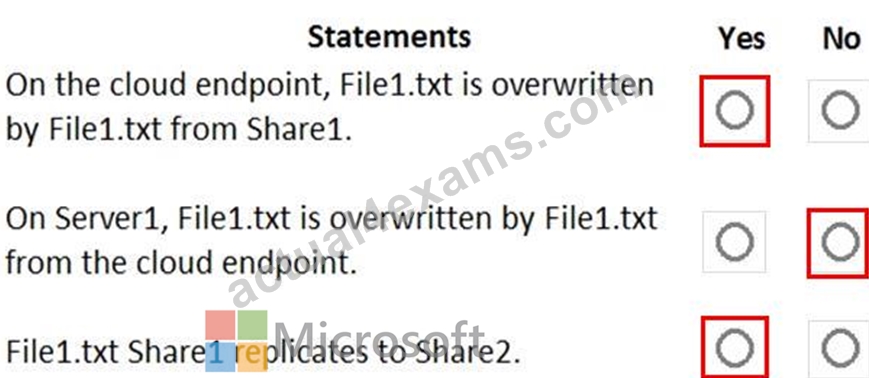
Explanation:
Statement 1: Yes
If you add an Azure file share that has an existing set of files as a cloud endpoint to a sync group, the existing files are merged with any other files that are already on other endpoints in the sync group.
Statement 2: No
Files present in any server endpoint will not be overwritten by the files present in cloud endpoint. Hence this statement is false.
If you add a server location with an existing set of files as a server endpoint to a sync group, those files will be merged with any other files already on other endpoints in the sync group but not vice versa.
Statement 3: Yes
Azure File Sync has a simple architecture : cloud endpoints, which is the Azure File Sync service and server endpoints, which are the registered servers with the service. On top of that, we have Sync Groups, which combine one cloud endpoint with one or more server endpoints. All members of this group will receive the replicated data where the central location will be the cloud endpoint.
References:
https://docs.microsoft.com/en-us/azure/storage/files/storage-sync-files-planning
http://techgenix.com/azure-file-sync-replicating-data/
NEW QUESTION # 100
You need to recommend a solution for App1. The solution must meet the technical requirements. What should you include in the recommendation? To answer, select the appropriate options in the answer area.
NOTE: Each correct selection is worth one point.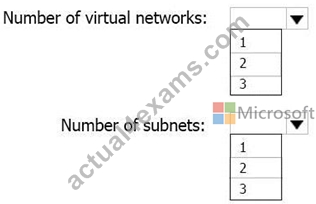
Answer:
Explanation: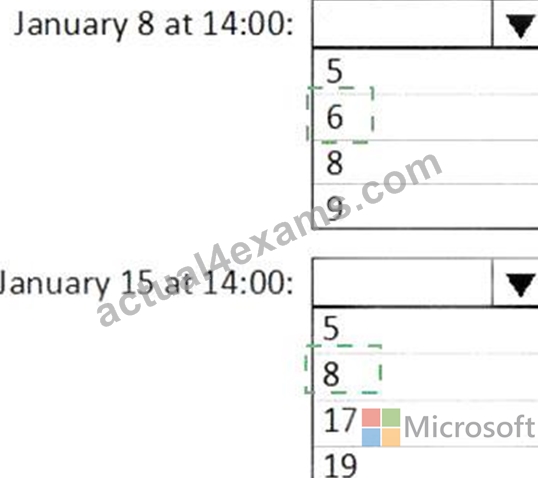
Explanation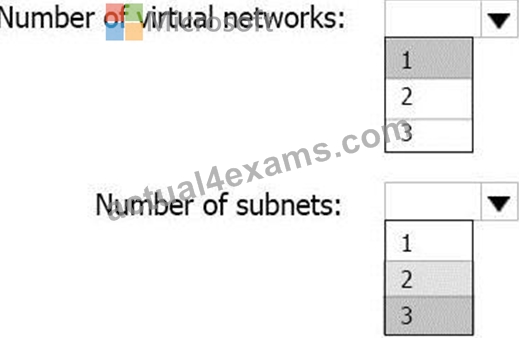
This reference architecture shows how to deploy VMs and a virtual network configured for an N-tier application, using SQL Server on Windows for the data tier.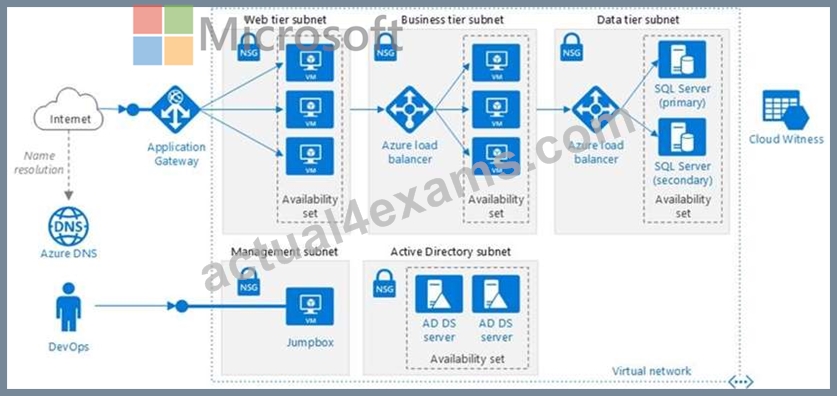
Scenario: You have a public-facing application named App1. App1 is comprised of the following three tiers:
* A SQL database
* A web front end
* A processing middle tier
Each tier is comprised of five virtual machines. Users access the web front end by using HTTPS only.
* Technical requirements include:
* Move all the virtual machines for App1 to Azure.
* Minimize the number of open ports between the App1 tiers.
References: https://docs.microsoft.com/en-us/azure/architecture/reference-architectures/n-tier/n-tier-sql-server
NEW QUESTION # 101
......
Microsoft AZ-104 (Microsoft Azure Administrator) Exam is a certification exam designed for IT professionals who want to prove their expertise in managing Azure resources. AZ-104 exam is intended to test the candidate's knowledge in various Azure services such as Azure networking, Azure compute, Azure storage, and more. AZ-104 exam is a great way for IT professionals to validate their skills in managing Azure resources and enhance their career prospects.
AZ-104 Exam PDF [2023] Tests Free Updated Today with Correct 257 Questions: https://www.actual4exams.com/AZ-104-valid-dump.html
100% Real AZ-104 dumps - Brilliant AZ-104 Exam Questions PDF: https://drive.google.com/open?id=19b_i-y4NO6NpD753Q2JA0FLxnUhYrkIO

